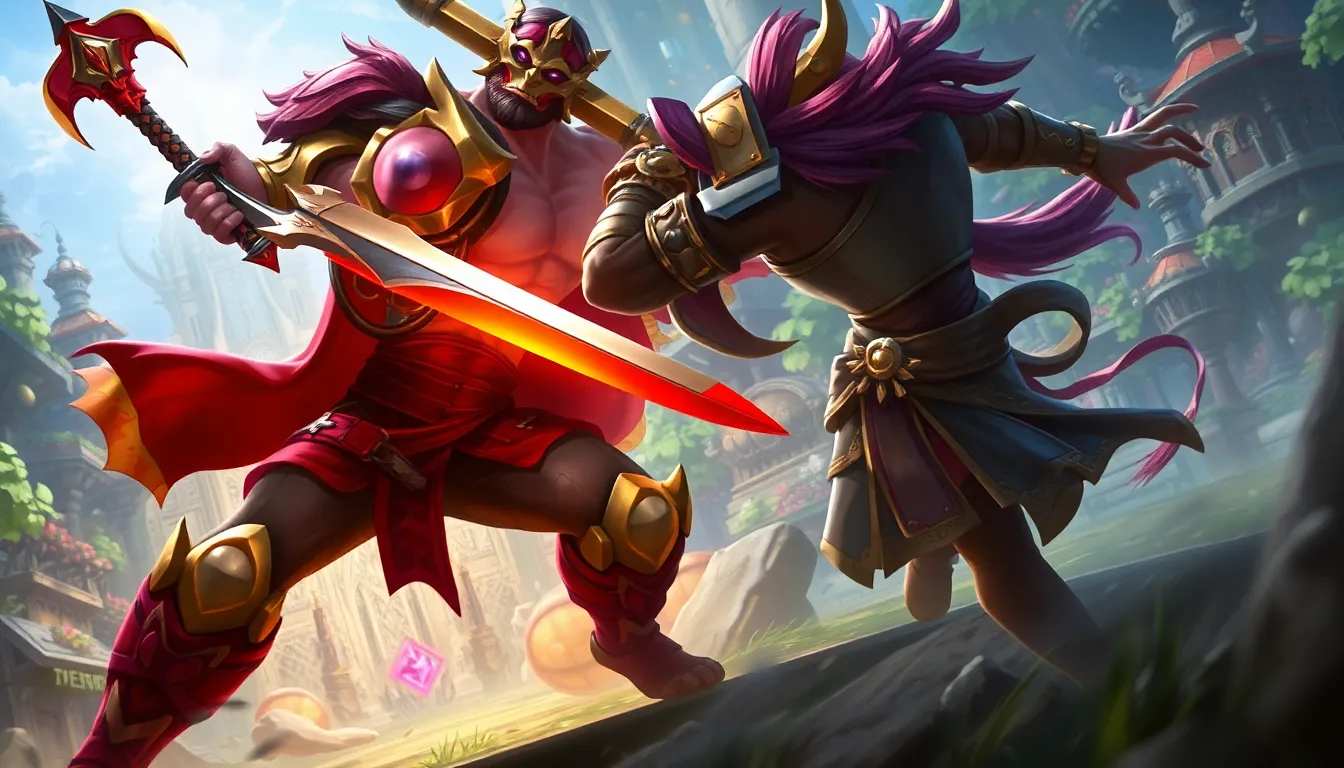In the fast-paced world of MOBAs, understanding damage types can mean the difference between glorious victory and a humiliating defeat. Players often find themselves scratching their heads over which damage type to unleash on their unsuspecting foes. Is it magic? Is it physical? Or is it just a well-timed burst of laughter at their expense?
Navigating these damage types isn’t just for the stats nerds; it’s essential for anyone who wants to dominate the battlefield. Each type has its quirks and counters, making it a strategic playground for the clever and the cunning. So buckle up, because diving into the realm of damage types is like finding the secret sauce for your favorite dish—once you know it, you’ll never look at the game the same way again.
Table of Contents
ToggleOverview of MOBA Damage Types
Understanding damage types in MOBAs aids in strategic gameplay. Players encounter primarily two categories: physical damage and magic damage. Each comes with distinct characteristics that influence gameplay strategies.
Physical damage relies on basic attacks and certain abilities. This type factors in the character’s attack power and enemy armor ratings. High armor reduces incoming physical damage, making champions with armor-enhancing abilities particularly effective against physical attackers.
Magic damage operates differently, often ignoring armor but impacted by magic resist. Ability power and spell interactions significantly amplify magic damage. Champions emphasizing spells frequently exploit this type to deal substantial damage to enemies without high armor.
Furthermore, damage types can include true damage, which bypasses all forms of defense. Certain abilities or items provide true damage as a unique advantage, crucial for countering highly armored targets.
Damage-over-time effects, like burn and poison, also exist. These continuous damage sources influence gameplay, forcing players to adapt strategies on the fly. Players faced with these types must consider sustain and healing abilities in their selection of champions.
Lastly, crowd control effects, while not damage types, often accompany other damage types. Stuns or slows can enhance the effectiveness of physical or magic damage, disrupting enemy actions and providing openings for attacks.
Recognizing the interplay between different damage types equips players with the knowledge to make informed decisions. Properly utilizing champions based on damage strengths and weaknesses can lead to increased effectiveness in matches.
Physical Damage

Physical damage represents a vital aspect of combat in MOBAs. Understanding its mechanics enables players to formulate effective strategies.
Characteristics of Physical Damage
Physical damage derives mostly from basic attacks and specific abilities. It relies on the character’s attack power and the target’s armor ratings. Increased attack power enhances the damage output, while higher armor reduces incoming damage. This interaction creates a strategic advantage, as players can choose champions better suited for their opponents. Several champions may deal additional physical damage through abilities, particularly those that scale with critical strike chance or attack speed. Champions lacking sufficient armor become vulnerable to physical damage, encouraging players to target frail opponents.
Examples in Popular MOBAs
League of Legends, Dota 2, and Smite prominently feature physical damage as a key gameplay element. Champions like Riven and Jhin in League of Legends demonstrate exceptional physical damage capabilities. Riven excels with her rapid multi-hit abilities, while Jhin’s precision strikes deal significant damage based on distance. Dota 2 showcases heroes like Phantom Assassin, whose critical hits dramatically amplify physical damage output. Smite features characters like Uller, whose abilities incorporate physical damage with excellent scalability. Each game emphasizes the necessity of recognizing and countering physical damage to gain a competitive edge.
Magical Damage
Magical damage plays a significant role in MOBAs, focusing on abilities that exploit a target’s magical resistance. This type of damage often relies on magic power rather than physical attributes.
Characteristics of Magical Damage
Magical damage often bypasses armor, making it particularly effective against tanky opponents. It primarily gets affected by magic resistance, which determines how much damage a target mitigates from magic attacks. Abilities that inflict magical damage can target a wide range of enemies, often applying conditions such as silence or slow. Players notice that some champions excel in delivering consistent magical damage, especially when engaging multiple foes. Notable characteristics include high burst damage potential and synergy with items that enhance spell power, enabling champions to obliterate squishy targets quickly.
Examples in Popular MOBAs
Champions such as Syndra in League of Legends exemplify magical damage through burst capabilities with abilities like Dark Sphere. Dota 2’s Lina showcases magical damage with her spellcasting prowess, utilizing Dragon Slave to deal area damage rapidly. Characters like Ra in Smite employ abilities like Celestial Beam, making his spells essential for team fights. Understanding these examples provides players strategic insights into how to deploy magical damage effectively during matches, ensuring synergy with overall team composition.
True Damage
True damage represents a unique damage type in MOBAs, bypassing all forms of defenses. Players recognize its significance as it allows direct application against enemies, irrespective of their armor or magic resistance.
Characteristics of True Damage
True damage stands distinct from other types, providing players with an advantage when facing heavily armored opponents. This damage type ignores both physical and magical protections, ensuring consistent impact regardless of the target’s defensive capabilities. Notably, true damage can be pivotal in computations that maintain game balance. Players who utilize champions with true damage skills maximize their effectiveness, especially in late-game scenarios when enemies possess substantial defenses.
Examples in Popular MOBAs
Several champions in popular MOBAs utilize true damage effectively. For instance, champions like Darius from League of Legends inflict true damage through abilities, enhancing his execution potential against tanky enemies. In Dota 2, characters like Kunkka deal true damage with certain attacks, allowing for significant engagement in team fights. Smite also showcases characters like Loki, whose strikes include true damage, emphasizing their capability in strategic skirmishes. These examples highlight how true damage influences gameplay, offering players opportunities to counter formidable foes.
Damage Mitigation and Reduction
Damage mitigation and reduction play crucial roles in gameplay within MOBAs. Players must grasp the various strategies to effectively manage damage types to enhance survivability.
Strategies for Managing Damage Types
Understanding physical damage resistance is essential. Building items that increase armor can significantly lower incoming damage from champions like Jhin or Riven. Complementing this, players can choose champions with crowd control abilities to disrupt attacks.
Utilizing magic resistance is equally important. Equipping items that boost magic resist helps counter champions like Syndra or Lina effectively. Integrating these items into one’s build allows players to withstand magical bursts during fights.
Timing abilities also impacts damage management. Activating defensive abilities at the right moment can reduce damage taken from crucial attacks. Capitalizing on the specificities of damage types allows for strategic positioning and enemy engagement.
Incorporating healing effects contributes to overall damage reduction. Selecting champions such as Alistar in League of Legends or Treant Protector in Dota 2 provides sustain, allowing them to absorb damage while staying in combat longer.
Mastering damage types in MOBAs is essential for any player looking to elevate their gameplay. Understanding the nuances of physical and magical damage as well as the strategic advantages of true damage can significantly influence match outcomes. Adapting to different damage types and utilizing champions effectively creates opportunities to exploit opponents’ weaknesses.
By recognizing how damage mitigation and reduction play into overall strategy players can enhance their survivability and impact on the battlefield. This knowledge not only enriches the gaming experience but also empowers players to make informed decisions that lead to victory. Embracing these concepts will ultimately pave the way for greater success in Multiplayer Online Battle Arenas.

